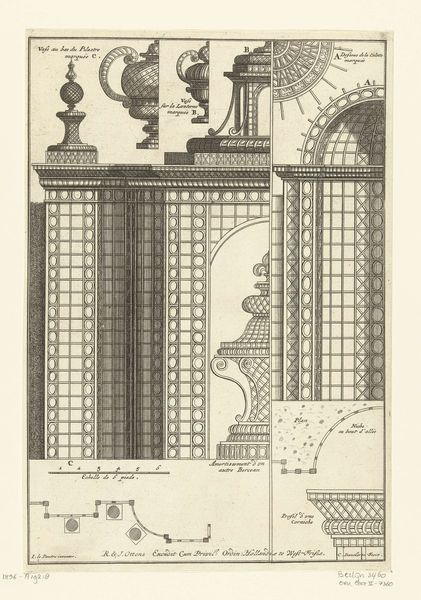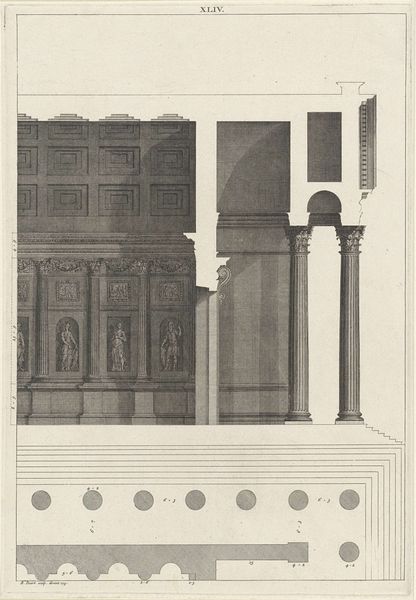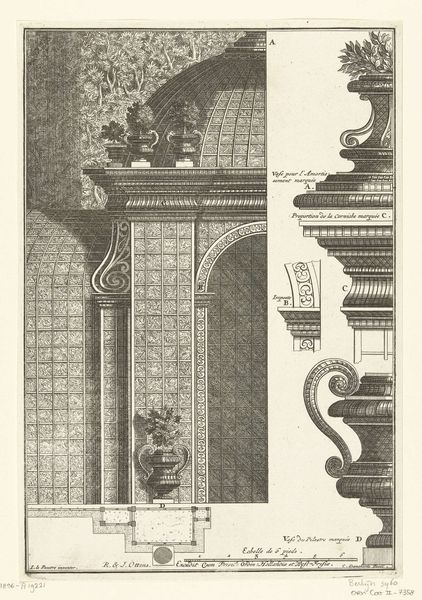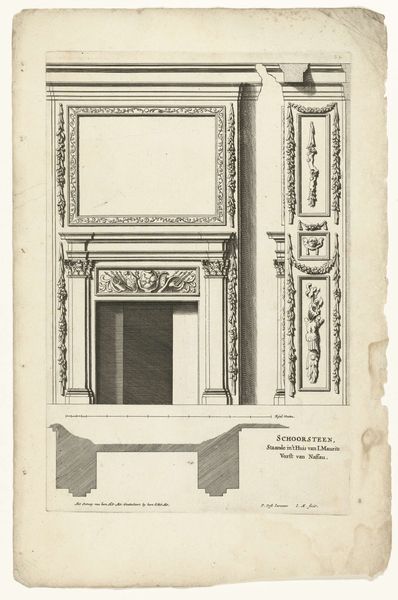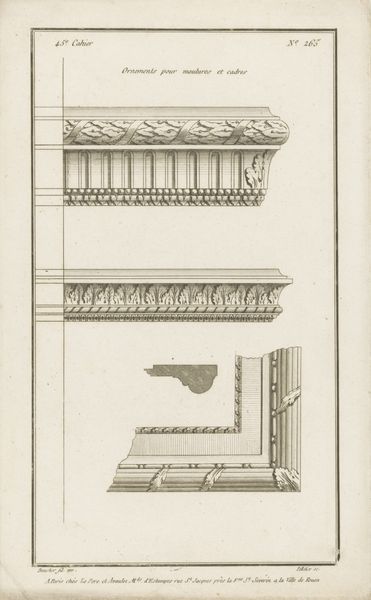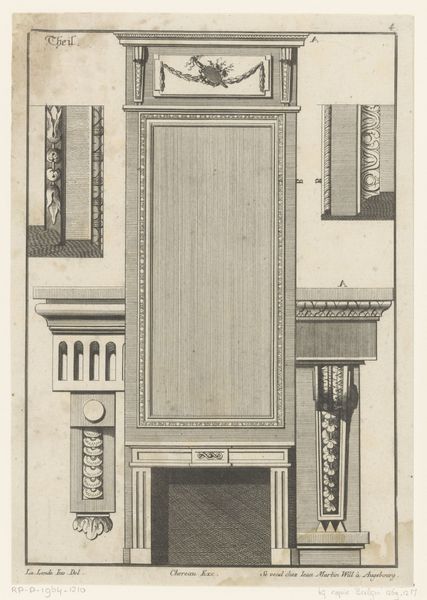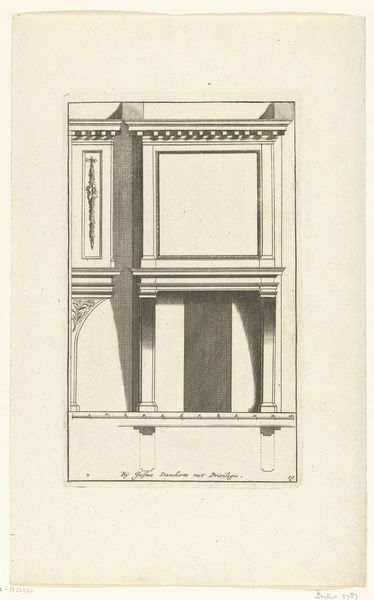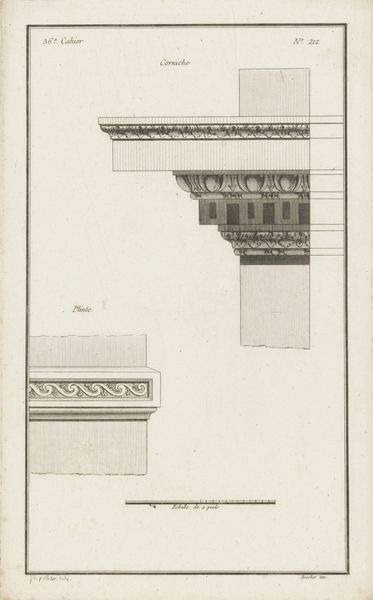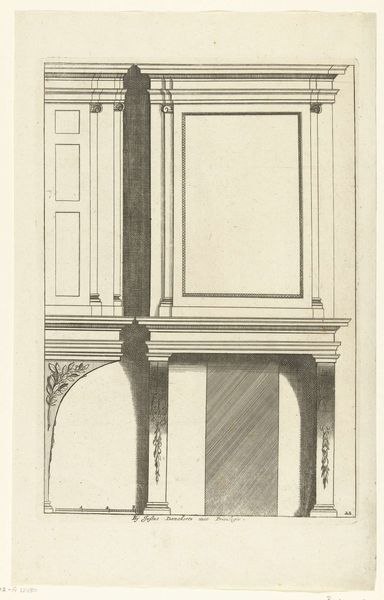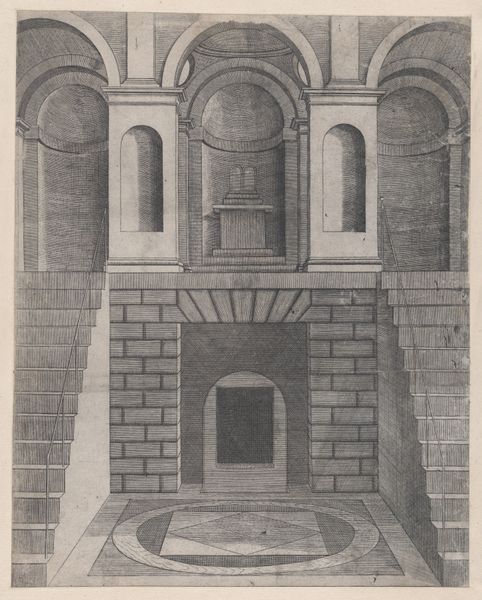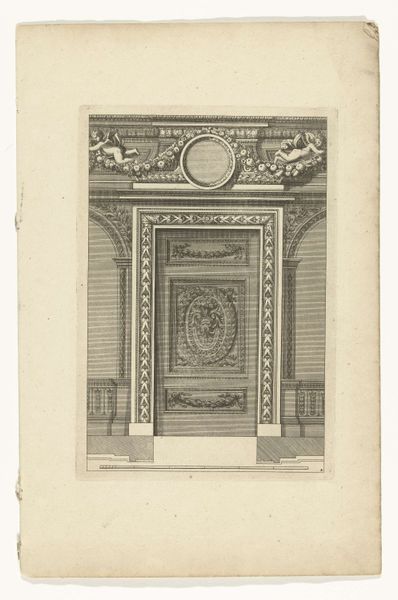
drawing, print, etching, architecture
#
drawing
#
baroque
# print
#
etching
#
etching
#
architecture
Dimensions: height 282 mm, width 196 mm
Copyright: Rijks Museum: Open Domain
Curator: Here at the Rijksmuseum, we have a fascinating etching dating possibly from 1726 to 1765. It's called "Drie helften van latwerkpaviljoens," and it’s attributed to Cornelis Danckerts II. Editor: My first impression is that this print feels intensely architectural. The linework is so precise, almost like an engineer's blueprint. There’s a certain rigidity, but also an intricacy that draws you in. Curator: Indeed, these detailed studies offer insight into 18th-century garden design and architectural practices. This print likely served as a source of inspiration and reference for architects and patrons of the time. These structures would be status symbols. Editor: Looking at the textures, created purely with etched lines, I’m fascinated by how Danckerts uses varying densities and directions to mimic shadow and material. You get a real sense of the pavilion’s surface. Curator: These lattice structures weren't merely aesthetic. Pavilions, follies, and the gardens that housed them played a critical role in shaping social interactions and reflecting status during the Baroque period. Owning a beautiful garden to leisurely spend your time at was associated with affluence. Editor: And there's an elegance in that rigidity, isn't there? It speaks to a desire for order and control, translated into architectural form through line and perspective. Curator: That drive for order mirrored the broader societal structure, these weren't democratic spaces. These structures served as stages for performances of power. They are evidence of the socio-political landscape of the time. Editor: I’m left thinking about how such simple lines can convey so much complexity and evoke a real sense of space, of volume and material. It’s more than just a technical drawing; it's an artful exercise in perception. Curator: Yes, the artistry is that he distilled contemporary culture and the design trends of the Baroque period onto this single sheet of paper. We are lucky to have these clues available to better grasp society in the 1700's.
Comments
No comments
Be the first to comment and join the conversation on the ultimate creative platform.
